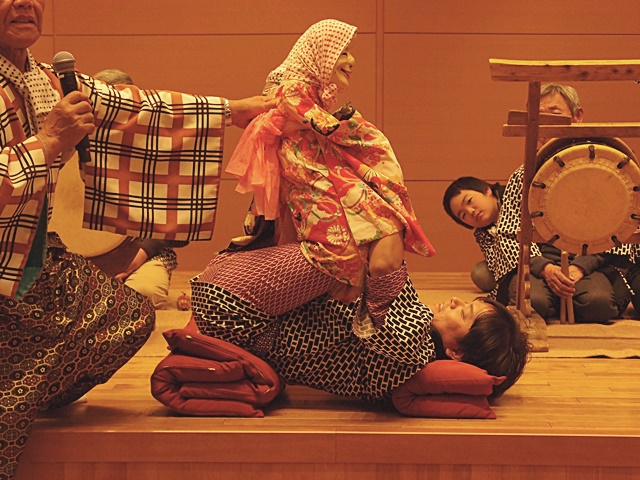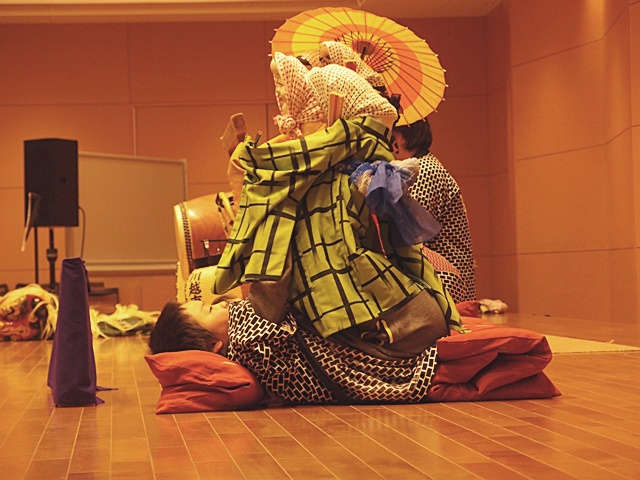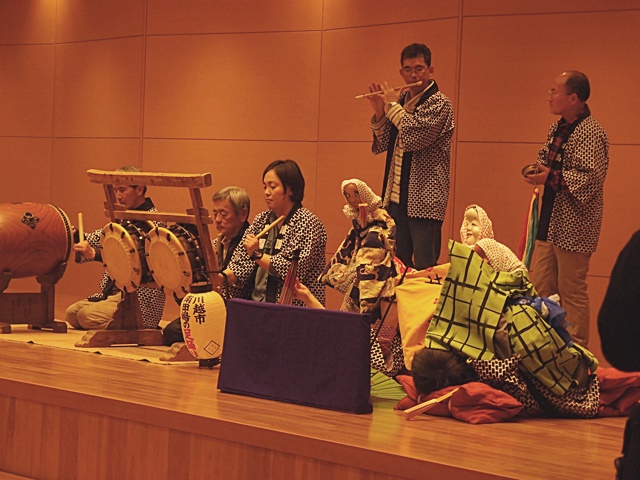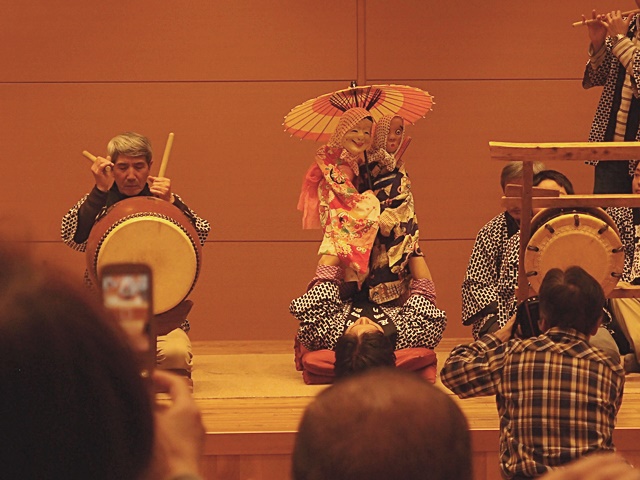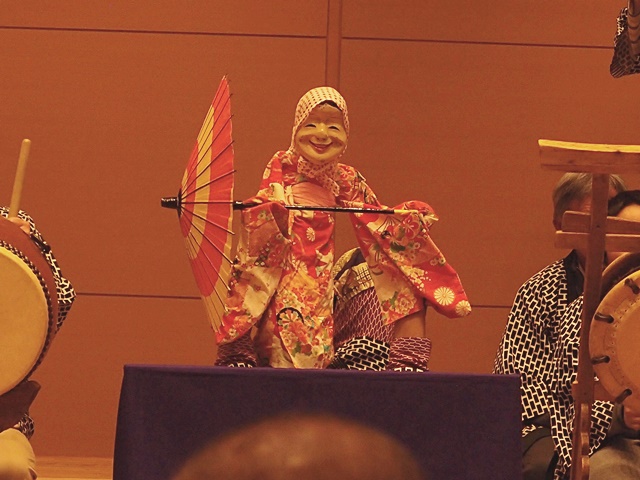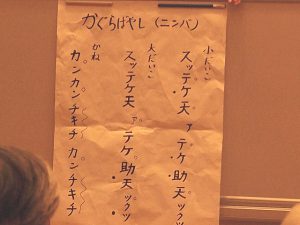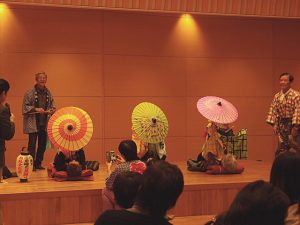On February 4, 2017, at the rehearsal room of the Kawagoe Cultural Center in Vesta Kawagoe, a performance of "Minamitajima foot dancing" was held.
Japanese
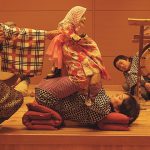
“足で踊る”超ユニークな伝統芸能!「南田島の足踊り」、世界への発信を目指して
目次
What is Minamitajima Foot Dancing?
“Minamitajima foot dancing” is one of the traditional arts specific to Minamitajima, a region located in the southeastern part of Kawagoe City.
It has been designated as a city with an abstract culture and folk customs.
Minamitajima
The Minamitajima foot dance is a unique style of dance that’s regionally specific.
A doll that is normally controlled by hand, is instead controlled by the dancer’s feet.
With the lilting musical accompaniment of “Ohayashi”, and the skilled dancing of the performer, the doll dances to the music.
(An Ohayashi is an instrument-based music. often played to complement Japanese folk arts, kabuki, etc.)
There are currently 15 members (as of February 4, 2017) of the "Minamitajima Hashiko Dance Preservation Society".
Inhabitants of Minamitajima are exclusively allowed to participate in this traditional practice.
Practicing for this dance style starts from the first grade of elementary school (6 to 7 years old).
They begin by being placed in charge of small drums up until the 3rd grade (8 to 9 years old).
From the 4th grade on, (9 years old to 10 years old) they begin to practice with large drums and whistles.
After the child’s body has developed, foot dance lessons begin in the 5th grade (10 years old to 11 years old).
The "Chibi-ko Hayashi Ren" (Children’s Band Federation) was formed to protect this tradition.
However, many young people leave the federation to pursue club activities, study for exams and seek employment.
This has caused problems due to a shortage of successors of the art form.
Let's Have a Look at the Foot Dance from the Side.
The performer lies on his back on the stage, placing a folded cushion under the neck and waist.
Attaching an Okame to the left foot, and a Hyottoko doll to the right foot, he puts his hands through the sleeves of the doll's kimono, and holds the fan and umbrella.
As the ankle rests near the neck of the doll, realistic movements can be achieved by moving the ankle accordingly during the performance.
The History of Foot dancing
In the early Meiji period, Morita Mori Yosuke, got the idea of foot dancing from Ningyo Joruri (one of the classical Japanese performing arts, called "Bunraku" in modern times, which is currently a protected cultural art form in Japan).
It is said that it started by attaching a face mask to a foot doll. In the early days, it appears that much simpler items were used to make dolls, such as inserting a rod into straw and decorating it by wrapping it with a towel.
After the art was inherited by Yasuhiro Hagihara and Motojiro Morita, it is said that the dolls began to take on the shape of those used today.
This was achieved through the practice of repeatedly refining the dolls and their costumes.
The “Minamitajima Foot Dance” Reception Party
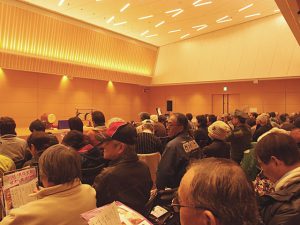
20 minutes before the performance, the hall had already been filled.
There were even guests standing to see the performance.
The age range of the audience was considerably high.
I felt a bit out of place ...
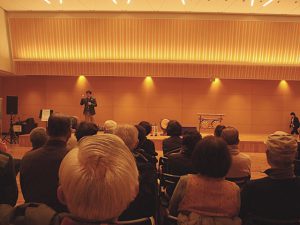
Host Introduction
Half of the guests in the venue raised their hands when asked the question:
"If you know what the Minamitajima foot dance is, please raise your hand"
Apparently 50% of the people who attended were familiar with the dance.
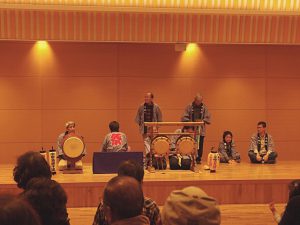
The time for the performance to begin came, and the performers took their positions on stage.
The second man from the left performed the foot dancing.
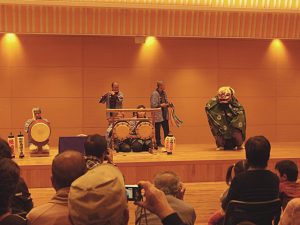
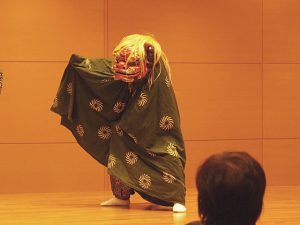
It starts off with the Lion Dance, performed by the president of the of “Minamitajima Hashiko Dance Preservation Society".
In the middle of the dance, Hyottoko appears from within the lion.
While Hyottoko is dancing, Okame’s foot doll appears from the middle of the stage.
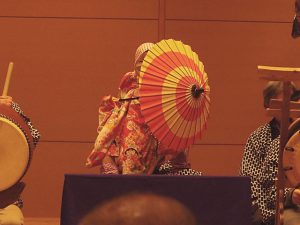
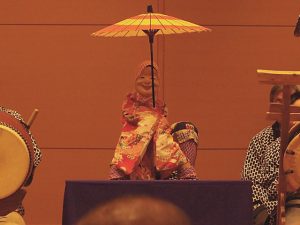
While I was watching the performance, it appeared as if the doll was alive.
I couldn’t believe that it was only being controlled with the performer’s feet and hands.
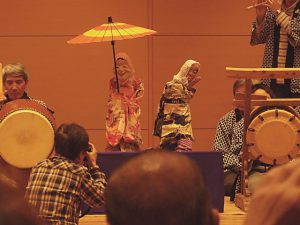
Hyottoko's foot doll also appeared and the number of dolls increased.
However, both dolls were being manipulated by just one person.
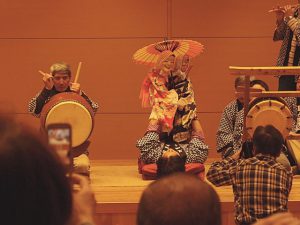
The chairman removed the and revealed to the crowd the position of the performer.
It is hard to convey, because the picture was taken from the front.
However, inside the dolls, are the hands and legs of the performer underneath.
It is said that the performers use up a considerable amount of energy, as they must maintain their position while the music is playing.
Explanation by the Performers
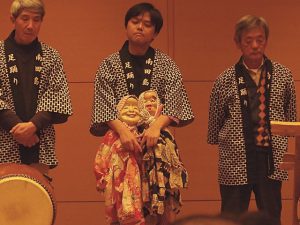
When the performance finally ended, the president explained to the audience the details of foot dancing.
The Percussion Music Sheet
This is the music score of Ohayashi.
There are no markings to indicate the scale or timing. It is all expressed as an onomatopoeia.
The performers appear to learn the music while singing a song composed of onomatopoeias over and over.
Despite this, they were actually able to perform it.
The score of the bell player was written as "Kankan Chikichi Kan chikichi".
Next, were the performances of the big and small drums.
The scores were written as follows:
Odaikado (the two on the right) "Sutteten a teke suketentsukutsu"
Daiko drum (left) " Sutteten a teke suketentsukutsu ".
Foot dance
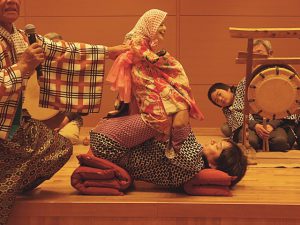
Foot dancing requires maintaining a posture that seems to overwork the hips, legs and arms, as can be seen in the photos.
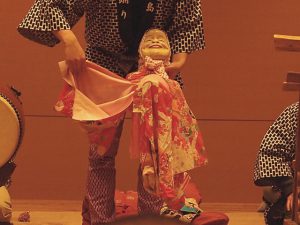
A hole through which the performer passes his arm.
By inserting an arm into this opening, the performer is able to manipulate the hands of the doll.
Time for the Audience to Experiencing Foot Dancing
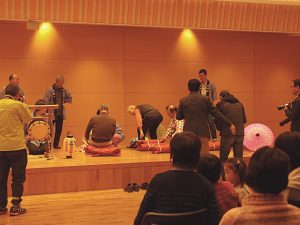
This was an opportunity for the audience to experience the art of foot dancing.
The audience had a rare opportunity to try the art of the Minimitajima foot dance.
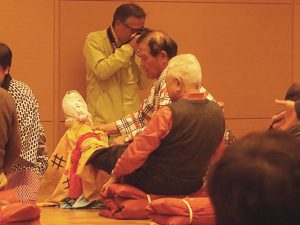
Audience members struggled to wear the dolls.
The performers had set the dolls up quickly, but, it seemed to be quite a difficult task for the inexperienced.
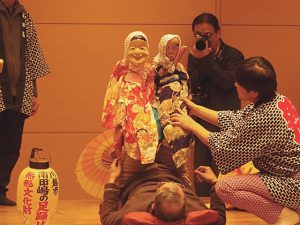
Raising the feet allows the doll to appear as though they are standing up.
However, it is hard to find the proper angle, and it proved to be very difficult for the audience members who ventured to try foot dancing.
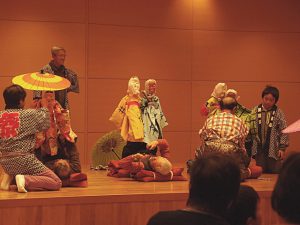
After you have held the umbrella in the hand of the doll, you are ready to begin the performances... Even at this point everyone was struggling.
It took about five minutes for everyone to properly hold the umbrella.
An Amateur Foot Dance.
If you look here, you can see just how large the difference in quality between the professional and amateur performance was...
This time three women tried the challenging task.
They seemed to have difficulties keeping the umbrella in position. Perhaps it was a problem of strength.
Afterwards, various people challenged themselves to try foot dancing.

Some people also tried to play the percussion instruments.
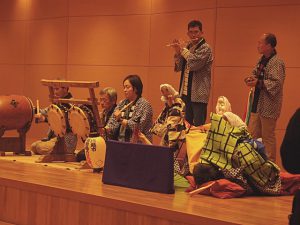
After the audience had an opportunity try foot dancing, the professionals played one last song.
Since the crowd now understood the skill required to perform foot dancing, the expressions on the faces of the audience members had changed greatly from the initial performance to the final performance.
Let's Go and See the Minamitajima Foot Dance!
The foot dance of Minamitajima can be seen at festivals such as the spring prayer festival on April 14, held at the Nankida Hikawa Shrine, the Tenno on July 14, and the Ohimachi on October 14.
Admission is free. However, because the road is narrow and there are many steps, those who require a wheelchair or stroller may find it difficult to attend.
Venue: Hikawa Shrine (Minamitajima)
Keep in mind that this shrine is different from the Hikawa Shrine. It is famous for marriages!
A 19 minute walk from the JR Kawagoe Line "Minami Furuya Station".
A 22 minute walk from the Tobu Tojo Line 'Shingashi Station'.
Please note: a parking is not available.
In addition, it may be exhibited at the Kawagoe Hikawa Festival (Kawagoe Festival) held yearly in October.


